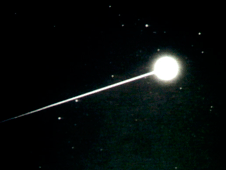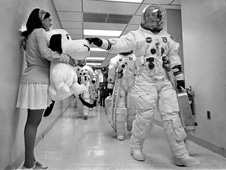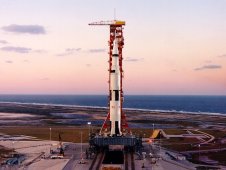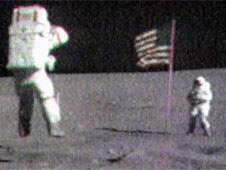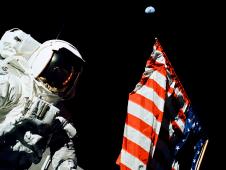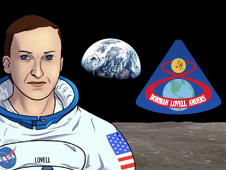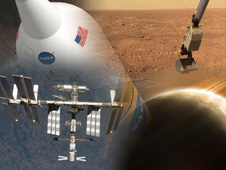Five years ago NASA's Stardust spacecraft navigated through a cloud of ice and dust to return images of comet Wild 2. Read more historical facts in This Month in Exploration.
- NASA Home
- > News & Features
- > News Topics
- > NASA History
Latest Features
This Month in Exploration - January
Snoopy Soars with NASA at Charles Schulz Museum
The Charles M. Schulz Museum in Santa Rosa, Calif., is highlighting the connection between NASA's pioneering astronauts and Peanuts' barnstorming beagle.
This Month in Exploration - December
Forty years ago the crew of Apollo 8 transmitted the first image of Earth from space. Read more historical facts in This Month in Exploration.
More Features
-

Standing the Test of Time
Earl Hanes started to work at NASA through the apprentice program in 1953. Today he's doing research that will send us back to the moon.
-

Final Flight of the X-15 Left a Legacy of Success
Research pilot William H. "Bill" Dana completed his cockpit checklist in preparation for a flight in the rocket-powered X-15.
-

On NASA's Team Until the Final Inning
When the National Aeronautics and Space Administration came into being in 1958, Richard Cavicchi already had 14 years of service with the federal government.
-

This Month in Exploration - November
Five years ago scientists observed the largest solar flare in recorded history. Read more historical facts in This Month in Exploration.
-

From Taxidriver to Virginia's Aeronautics Hall of Fame
A freshly minted engineer from Catholic University was looking for a job in a new field when he first came to Langley Research Center. Norm Crabill had seen a helicopter land in Washington, D.C., and decided that he wanted to work on those new flying machines.
News Releases
-
NASA Television Commemorates Apollo 8 Christmas Eve Broadcast
12.22.08 - NASA Television will honor the 40th anniversary of the historic Christmas Eve broadcast by the Apollo 8 crew with special programming Dec. 24 and 25 on the NASA TV Public Channel (101).
-
Polyimide Foam Named NASA Commercial Invention Of 2007
12.19.08 - The 2007 NASA Commercial Invention of the Year - Polyimide Foam - is a multi-use foam that insulates for sound, heat and cold with aerospace and down to Earth applications.
Featured Videos
-

NASA 50th Anniversary Moments
Videos on NASA Television's YouTube channel
› Visit YouTube →



